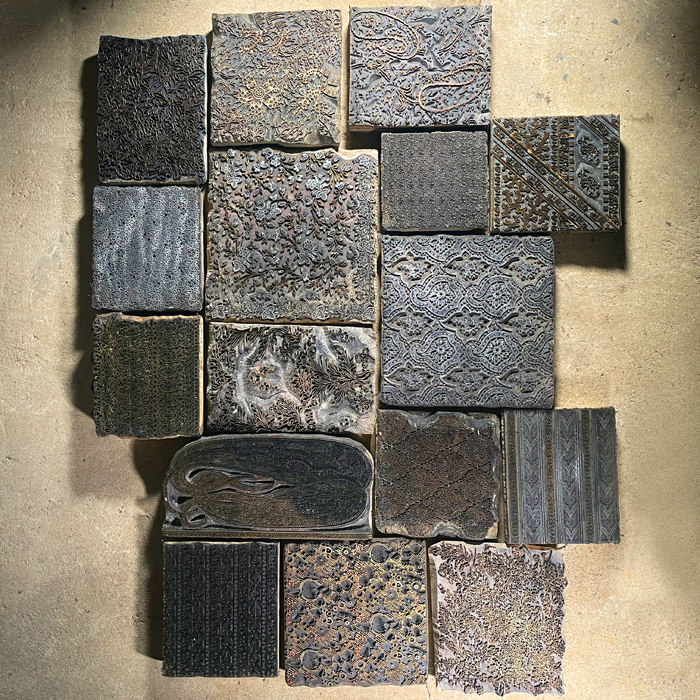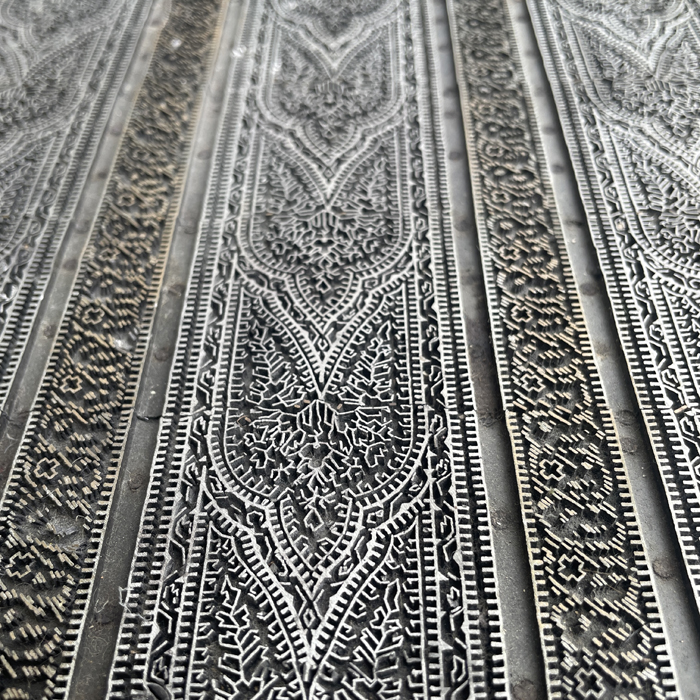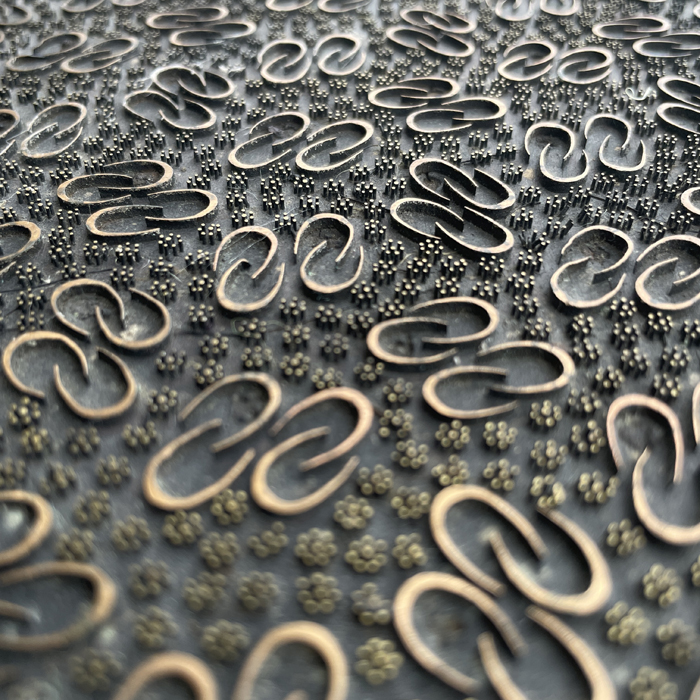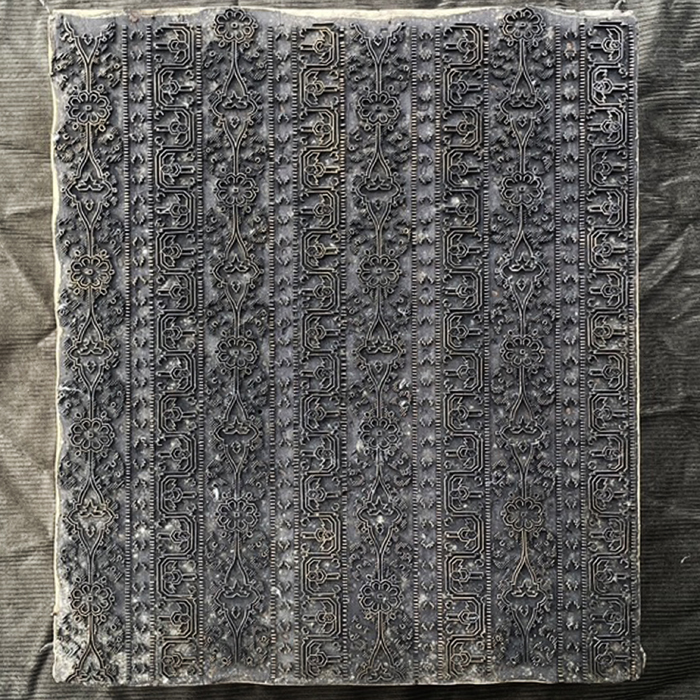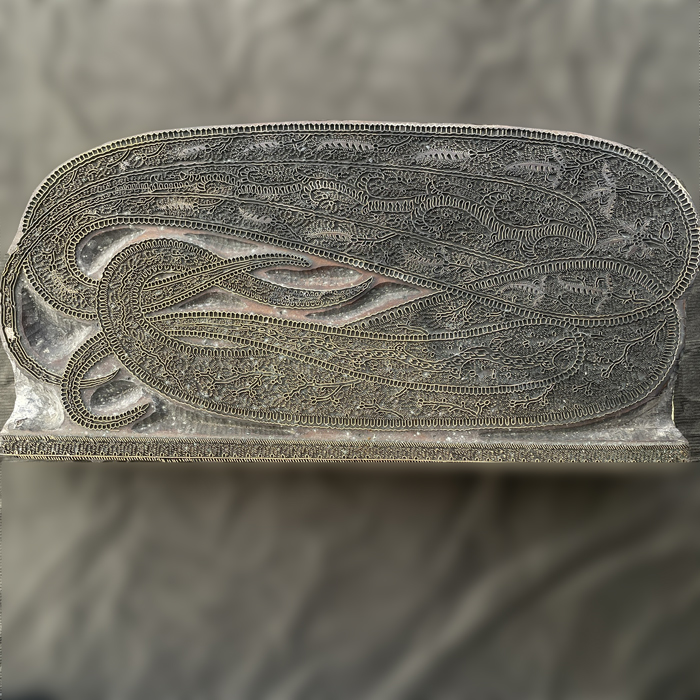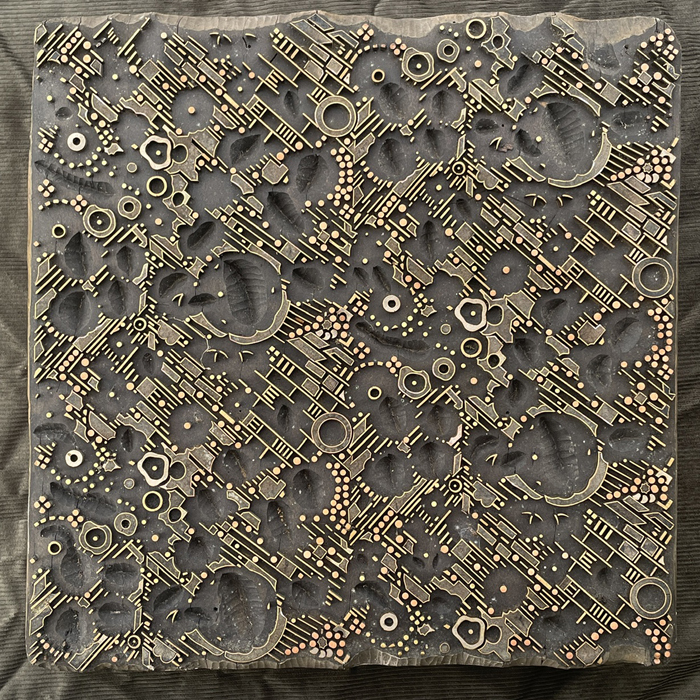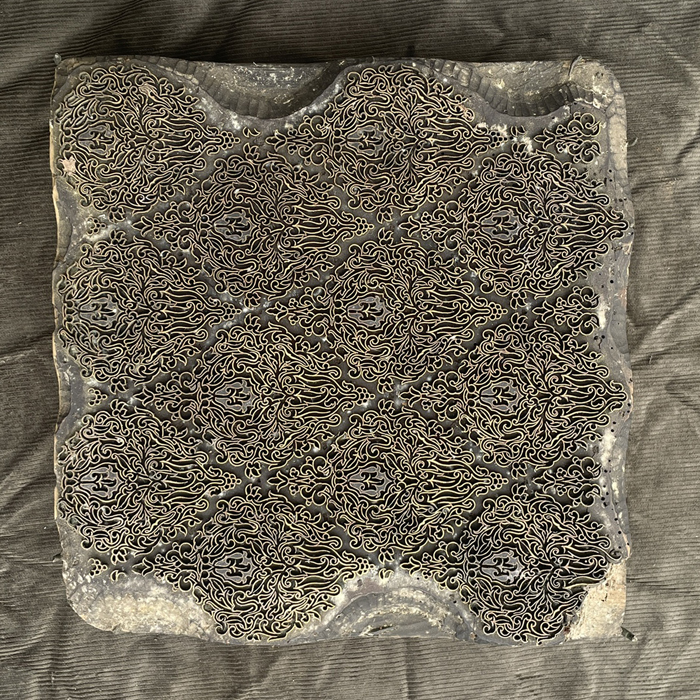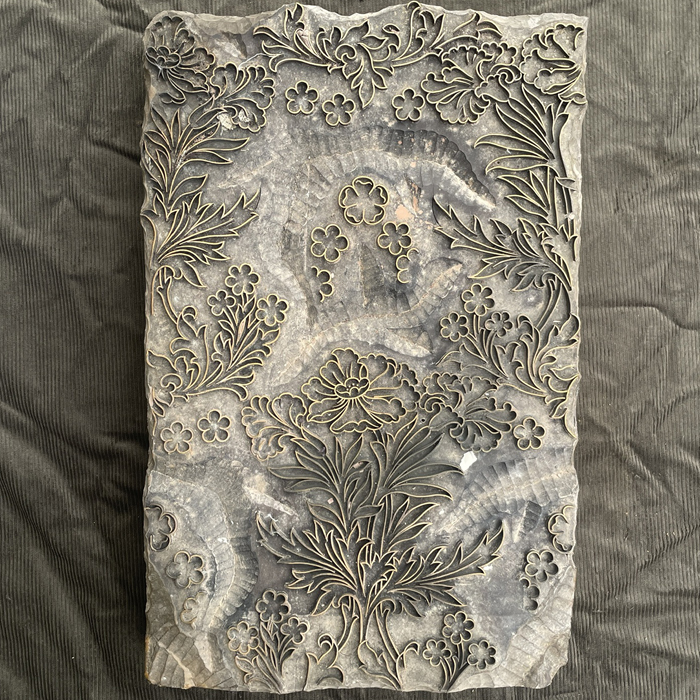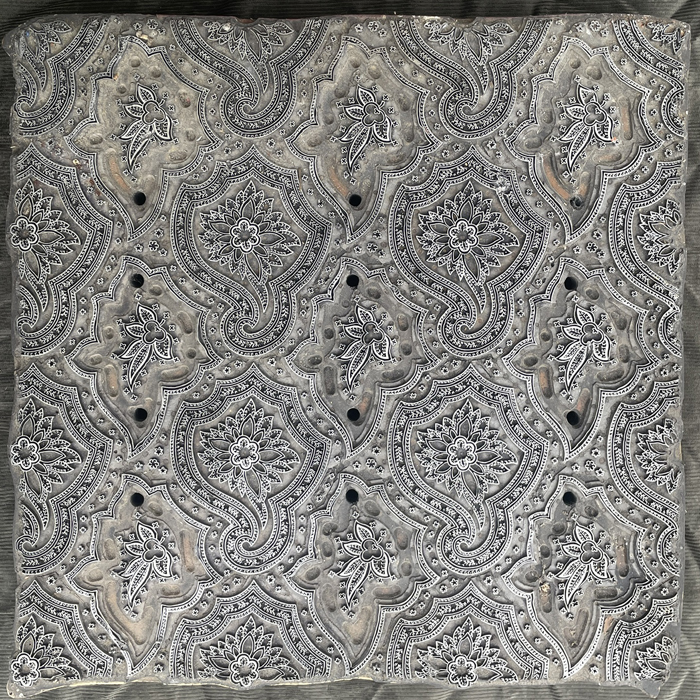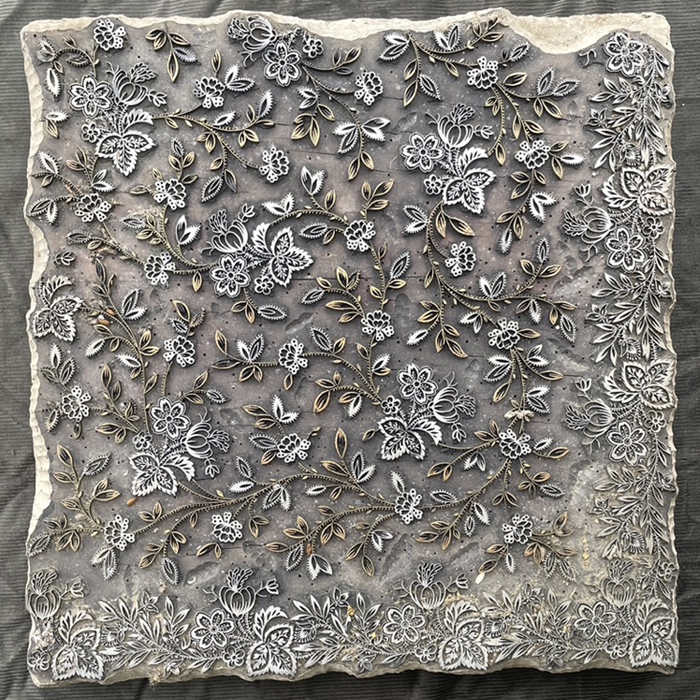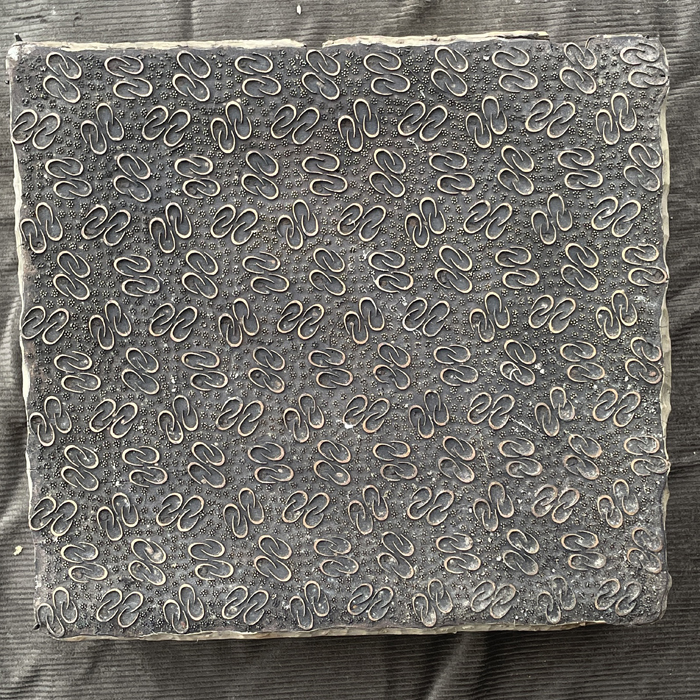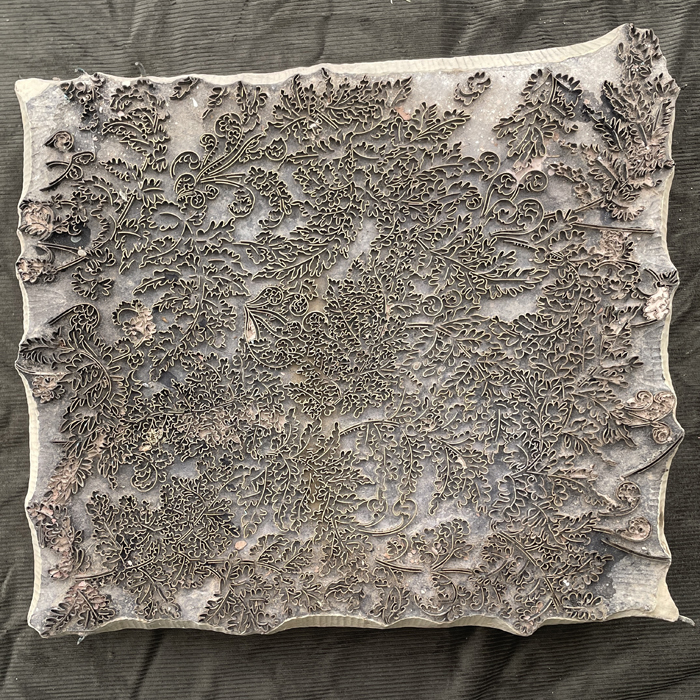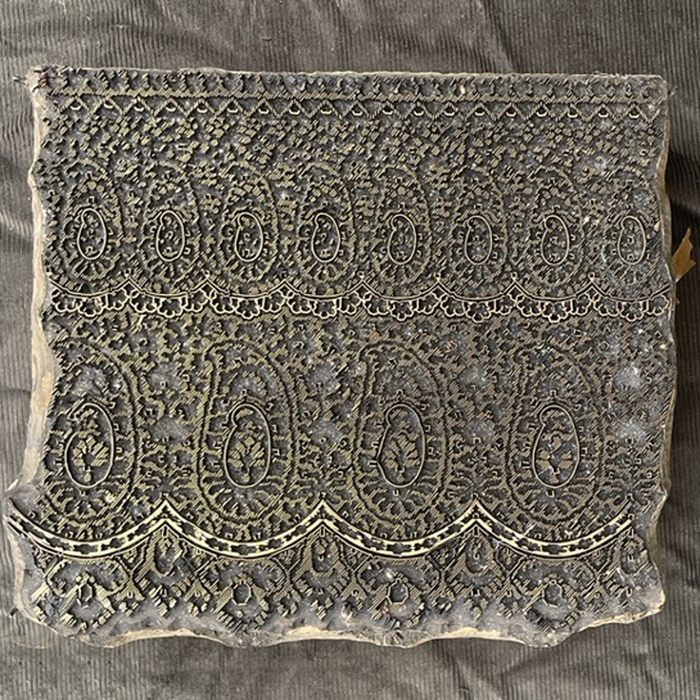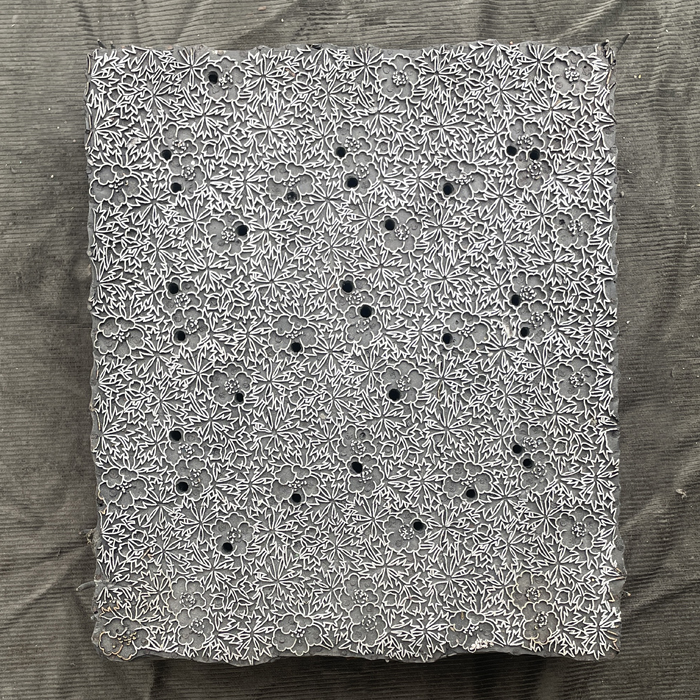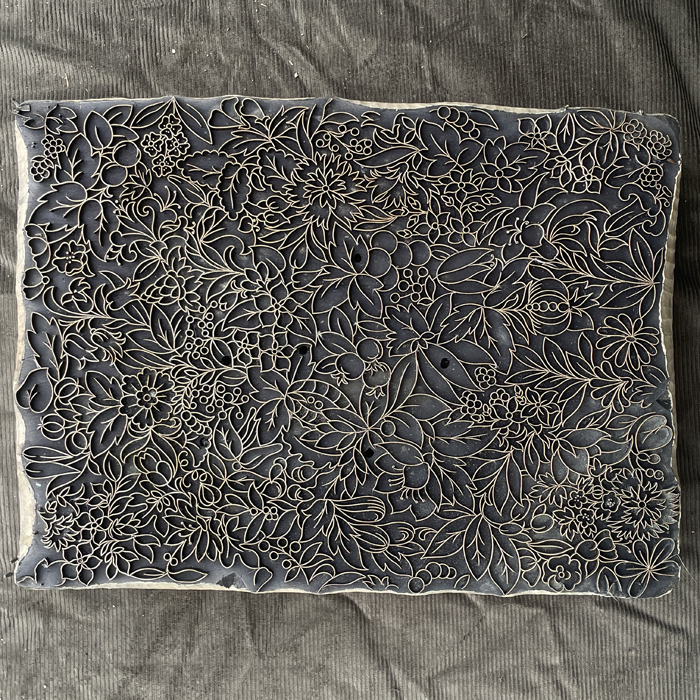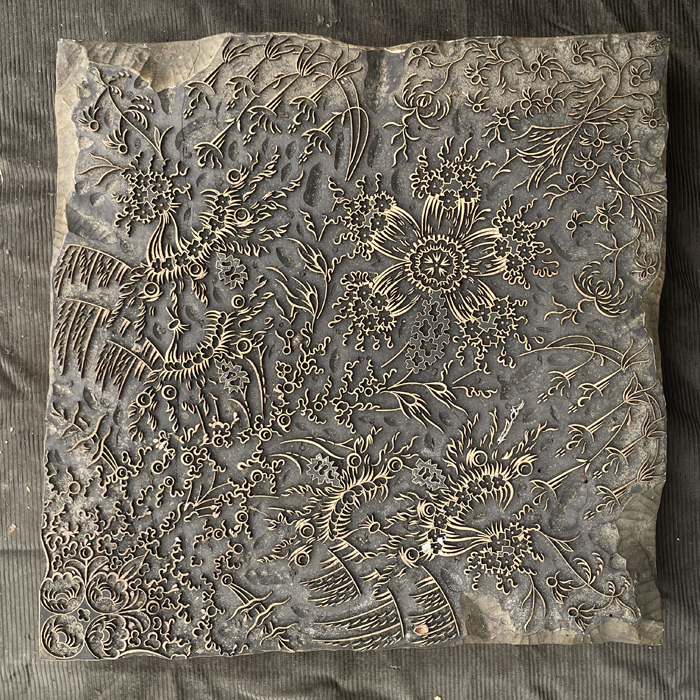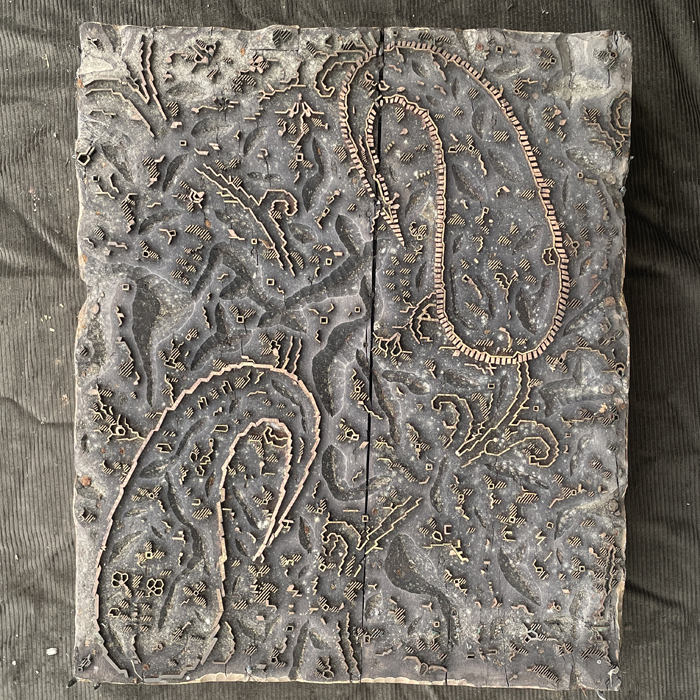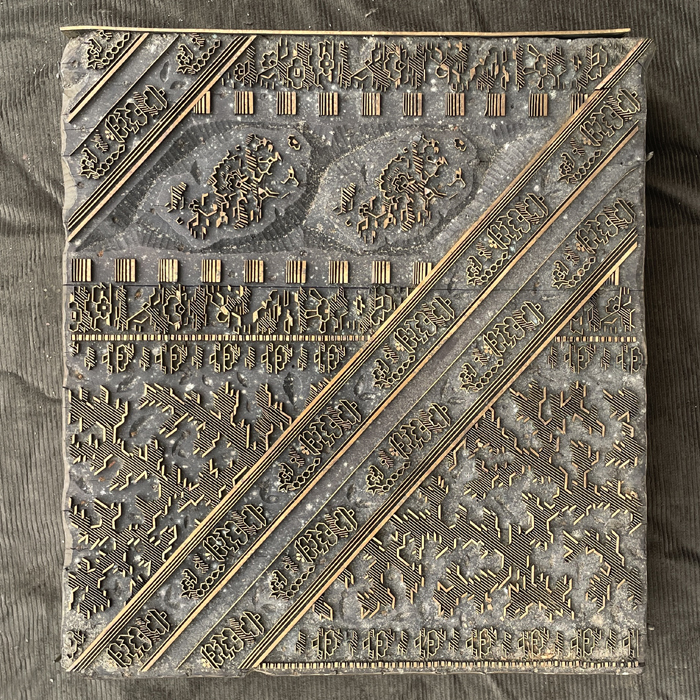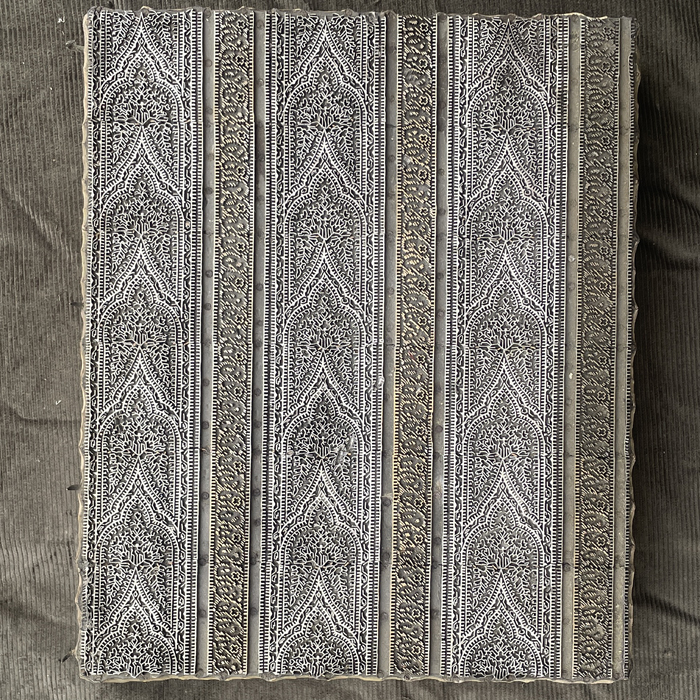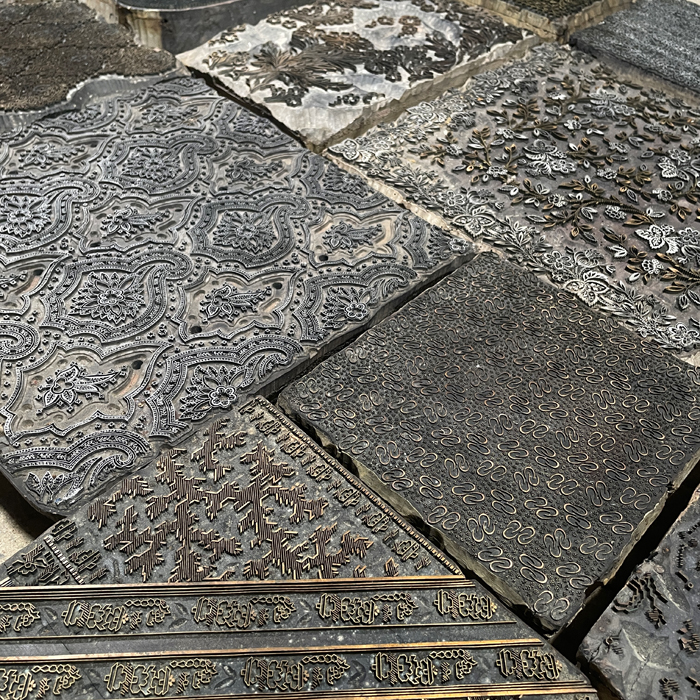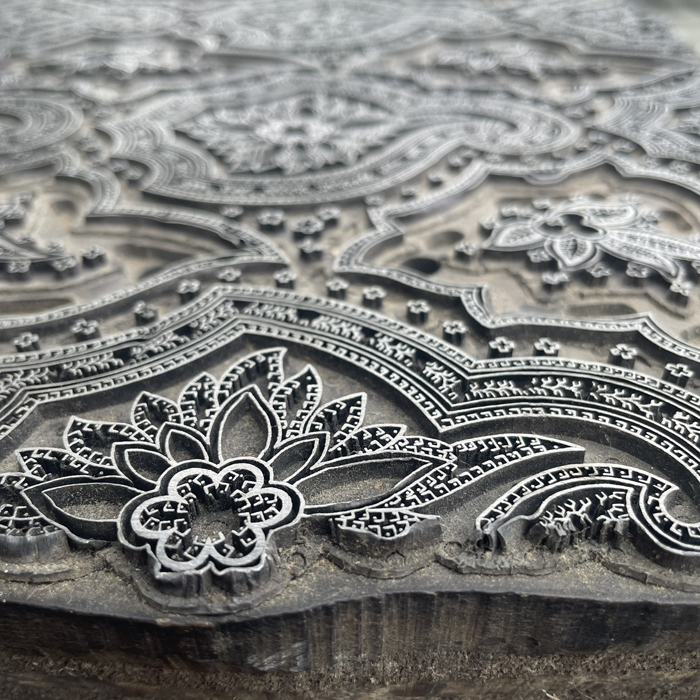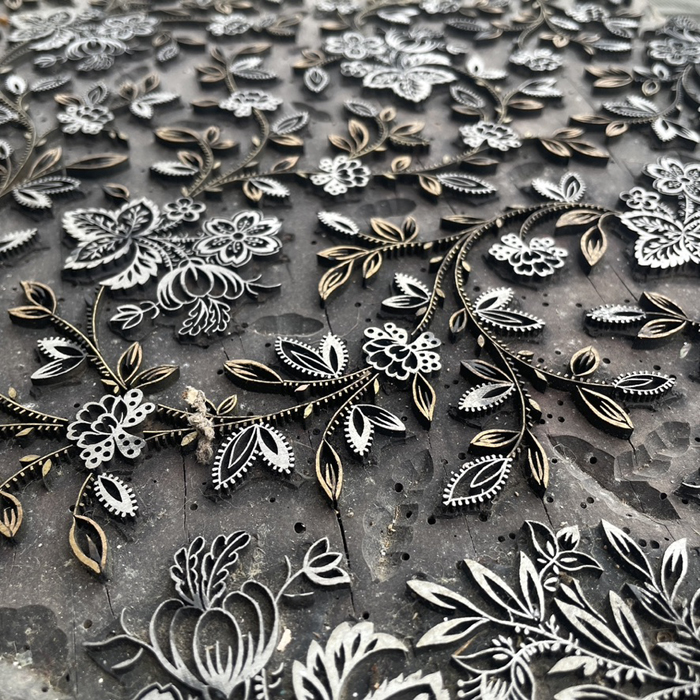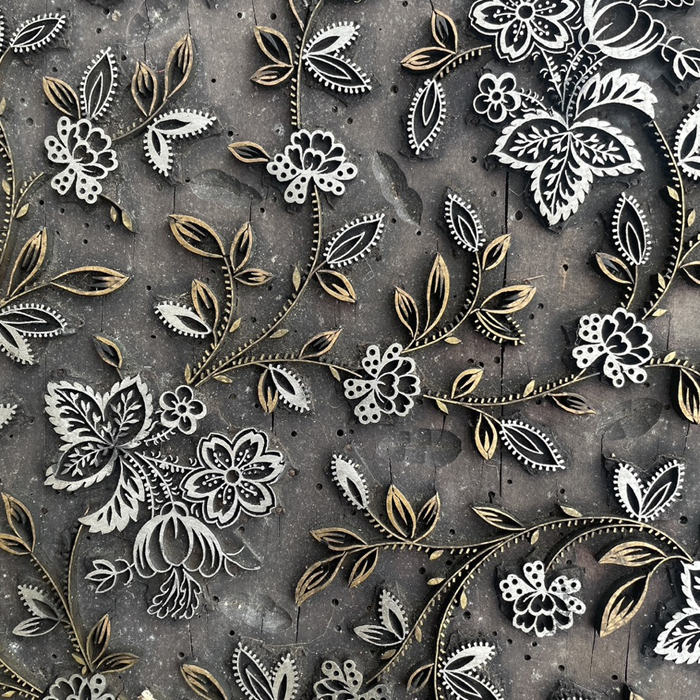A quantity of Edwardian textile printing blocks
each thick board ornamented with delicate patterns of raised brass and steel, pins or blades, in order to create complex motifs for textile printing, the reverse with recessed grips for the printer to apply the inked (or stopped-out) block, most with bent corner-pins to prick the cloth in order to reference position subsequent prints,
£3,200
In stock
Hung in groups these printing blocks make an intriguing and unique display. They are best shown under a strong glancing spot-light that picks up the brass glint and in a corridor or smaller room where the viewer can get up-close and look at the amazingly intricate construction. They are made from tiny pins and blades of iron and brass hammered by hand into a block – perfectly level – in order to print delicate repeated designs onto fabric.
The method of using metal pins was an innovation in Victorian times – previously these blocks would have been relief-carved in hardwood. The metal printing surface was of course much more hardwearing and allowed for greater intricacy.
We know that most, if not all, of these blocks were used for printing Liberty patterns – those marked with “L” certainly were.

Ultimately, out of use and stored for decades, over 1000 of the blocks were found in 1967 stacked in tea-chests in the basement of Gomshall Mill, Surrey, when the building was sold and cleared. Up until that point Gomshall, an historic watermill dating back to Norman times, was still grinding corn.
The entire lot were bought by an antiques dealer called Audrey Jackson. The Evening Post reported on her acquisition in 1967 (above). Audrey had set up a fabulous shop near Newbury the previous year, called “Griffon Court Galleries”, and was soon supplying them to many top interior designers. She retained fifty or so for her own collection and tucked them away in her garage – these are some of that collection – search “Liberty” to see the rest as they are catalogued at LASSCO Three Pigeons. How the discontinued printing blocks came to be stored at Gomshall, when originally they were most likely utilised at Liberty’s Abbey Mill works at Merton, some 20miles away, isn’t known.
Liberty of London is renowned for its distinctive printed fabrics, which have shaped British textile design since the company’s founding in 1875. Known for intricate floral patterns and rich colour palettes, Liberty fabrics became synonymous with high-quality craftsmanship and artistic innovation. A key chapter in this history was the company’s production of printed textiles at Abbey Mill in Merton, a site that played a crucial role in Liberty’s manufacturing from the early 20th century.
Arthur Lasenby Liberty established Liberty & Co. in 1875 as a luxury emporium on Regent Street, specialising in imported Eastern textiles. Inspired by the rich patterns and colours of these fabrics, Liberty soon began producing its own designs. Collaborating with leading artists of the Arts and Crafts and Art Nouveau movements, the company developed a signature style featuring delicate florals and organic motifs. By the 1920s, Liberty introduced Tana Lawn, a finely woven cotton that remains a hallmark of the brand.
Liberty had acquired Abbey Mill in 1904, an historic textile printing site. The mill became the hub of Liberty’s fabric production, using both roller and block printing techniques to create the company’s signature designs. Innovations in dyeing and finishing further solidified the brand’s reputation.
By the mid-20th century, changing manufacturing trends and rising costs led to the decline of textile production at Abbey Mill. The site ceased operations in the early 1970s. Liberty continued to produce fabrics through international partnerships.

